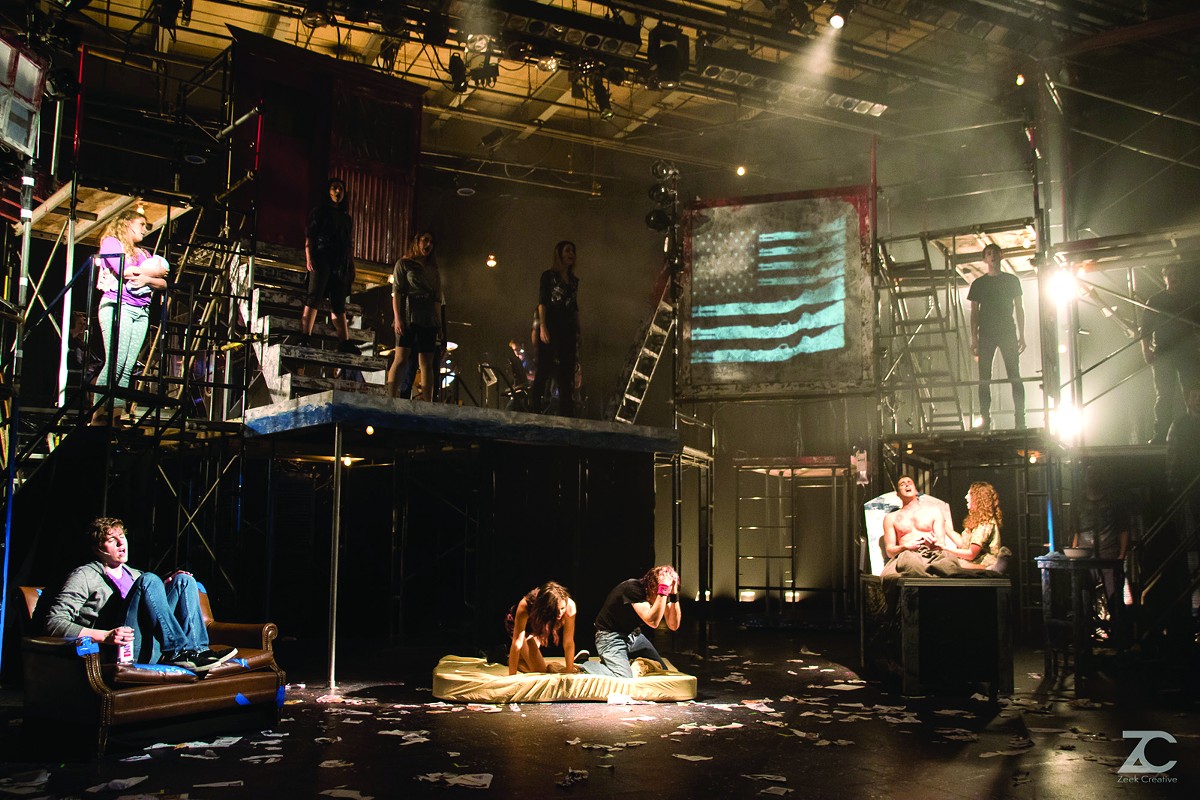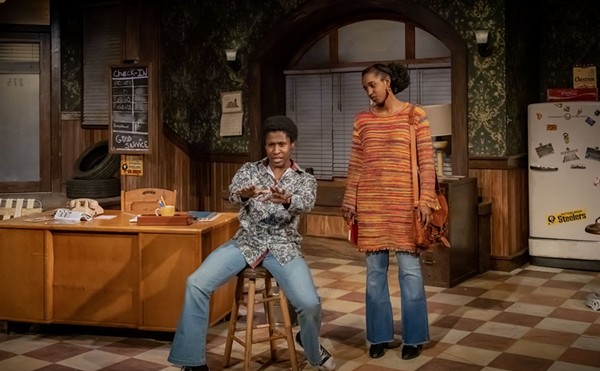You never see them. They do all their work before you ever arrive at the theater and by then they're gone, off on another gig. But boy, do they leave their mark on the plays you're seeing.
These mysterious folks are the projection, lighting and scenic designers who are utilizing modern technology to give new and old plays a fresh and often stunning look. By employing advanced computer programs, low-cost projectors, and LED lighting, many shows benefit from a visual landscape on stage that was never possible before.
Trad A Burns, who spins his magic at many theaters here and elsewhere, is fascinated by the new possibilities. "The range of color, texture and movement designers can access now is really amazing. We can project on multiple screens of different sizes from just one computer, or we can project an image on a giant drop that measures 32 feet tall and 70 feet wide. "In the past, those backdrops were hand painted and hugely expensive. But now, technology enables them to be printed, not painted, saving time and money.
As the lighting designer for American Idiot at Beck Center last year, Burns channeled the raucous energy of the rock group Green Day in projections that were as edgy and hyper as the music itself. As he says, "It was time consuming to find all the source material and then mask the images." But that effort paid off in a visual display that was every bit as ferocious as the performances themselves.
Perhaps the most jaw-dropping example of theater design is on display in award-winning The Curious Incident of the Dog in the Night-Time, which combines a complex choreography of lighting combined with pulsing graphic images and a techno score to fashion a breathtaking experience. (This show will arrive here in late March on its Broadway tour at Playhouse Square.)
And in the recently touring Kinky Boots, a brick wall was printed on a scrim so that lights could bleed through and the audience could see the shoe factory interior through the "brick wall."
But it turns out the new projection and lighting technology is quite democratic, allowing even small theaters to create visual effects that were never possible before. T. Paul Lowry, a projection designer, was able to bring cinematic tools to a show at a small theater space at Waterloo Arts on the east side. Thanks to the new computer software and hardware, he was able to project on four walls with 3D hyper-realism, and even show rain splashing on the projected windows.
As Lowry notes: "All designers want to tell stories and be as creative as we can be. The technology these days enables us to work at a higher level so we can make live stage shows edgier and cooler to look at. Projections and lighting design are actually now becoming a dramaturgical element in many productions. We can now think beyond just the place where a play is happening and provide more visual information." And by merging multiple design elements in one computer program, the finished effect is seamless. This opens a threshold of new possibilities for designers.
In 2015, Lowry designed the projections for The Turing Machine at Theater Ninjas, and 13 small screens came alive, each with different images all cut to size, while larger projections washed over the set. It was set to a compulsive electronic beat designed by Eric M. Gonzalez and it all meshed perfectly.
Mike Tutaj is a freelance projection and sound designer based in Chicago, and has worked on several shows in the Cleveland area. As he notes, "I love the challenge of working in live theater. But we have to remember, the tools are so powerful it's easy for projections to steal the focus of the show. So we need to collaborate closely with the director so that we can help energize the piece without becoming a distraction."
You might have seen Tutaj's handiwork in Mary Poppins at the Beck Center, where he projected images on 45 white umbrellas. "But that was easy compared to what's coming down the road. For instance, there is now motion-tracking software that will enable the projections to move in response to activity on the stage."
Also, some of the technology advances are affecting how work is done behind the scenes. For example, being able to draft in 2D and 3D helps the designers see the actual height and overall dimensions of their ideas. Isometric drawing empowers designers to try more difficult designs, enhancing the impact these designs have on the shows. And 3D printing is aiding in the creation of models of set designs in less time and at lower cost.
Indeed, projection design is becoming its own respected discipline in theater, and the future for theater design overall has never been brighter or more exciting. That eye candy will make the experience more rewarding for everyone who loves live theater.













